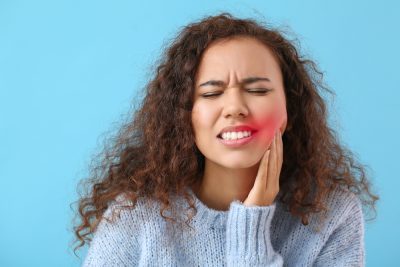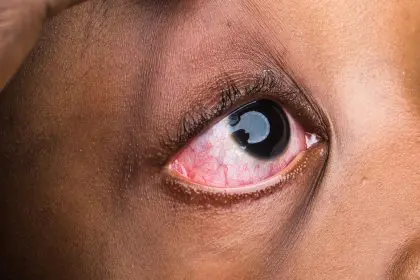The golden years should be filled with confident smiles, hearty laughter and the ability to enjoy favorite foods without worry. Yet millions of older adults face the devastating reality of tooth loss, which can dramatically impact their quality of life, nutrition and self-esteem. The good news is that tooth loss isn’t an inevitable part of aging, and revolutionary approaches to senior dental care are helping people maintain their natural teeth well into their 80s and beyond.
Modern dental science has revealed that the traditional acceptance of tooth loss as a normal part of aging is fundamentally flawed. With the right strategies, preventive measures and lifestyle adjustments, seniors can keep their natural teeth for life while avoiding the physical discomfort, social embarrassment and financial burden that comes with tooth replacement procedures.
The key lies in understanding how aging affects oral health and implementing targeted strategies that address these specific challenges. As we age, our mouths undergo significant changes that require adapted care approaches. Saliva production decreases, making teeth more vulnerable to decay. Gum tissue becomes more delicate and prone to recession. Medications can affect oral health in unexpected ways. Yet each of these challenges has effective solutions when addressed proactively.
Method 1: mastering the fluoride advantage
The first incredible strategy involves harnessing the protective power of fluoride in ways specifically tailored for senior needs. While fluoride has long been recognized for cavity prevention in children, its benefits for older adults are often overlooked despite being equally important. Senior teeth face unique challenges that make strategic fluoride use essential for long-term tooth preservation.
Prescription-strength fluoride treatments provide significantly more protection than standard toothpaste. These concentrated formulations penetrate deeper into tooth enamel, creating a stronger barrier against the acids that cause decay. Many seniors benefit from using prescription fluoride toothpaste or mouth rinses, particularly those experiencing dry mouth or taking medications that affect saliva production.
The timing and method of fluoride application can dramatically impact its effectiveness. Using fluoride treatments before bedtime allows for extended contact time without the diluting effects of eating or drinking. This overnight protection is particularly valuable for seniors who may have reduced saliva flow during sleep, when natural mouth cleaning mechanisms are less active.
Method 2: revolutionizing daily cleaning techniques
The second transformative approach involves revolutionizing daily oral cleaning techniques to address the specific needs of aging mouths. Traditional brushing and flossing methods may not be sufficient for older adults whose dexterity, vision or oral anatomy has changed over time. Adapting cleaning techniques to accommodate these changes while maximizing effectiveness requires strategic modifications.
Electric toothbrushes offer significant advantages for seniors, particularly those with arthritis or limited hand mobility. The oscillating or sonic action provides superior plaque removal with less manual effort required. Many models include pressure sensors that prevent aggressive brushing, which can damage receding gums common in older adults.
Water flossers represent a game-changing technology for seniors who struggle with traditional floss. These devices use pressurized water streams to remove food particles and bacteria from between teeth and below the gum line. They’re particularly beneficial for those with bridges, implants or tight spaces that make string floss difficult to maneuver.
The sequence and timing of oral care activities can significantly impact their effectiveness. Starting with water flossing loosens debris and bacteria, making subsequent brushing more effective. Following up with fluoride rinse provides an additional protective layer while addressing areas that mechanical cleaning might have missed.
Method 3: combating dry mouth naturally
The third powerful strategy focuses on combating dry mouth, one of the most significant risk factors for tooth loss in seniors. Reduced saliva production affects more than half of older adults and creates a cascade of oral health problems that can quickly lead to tooth loss if not addressed properly.
Saliva serves as the mouth’s natural defense system, neutralizing acids, washing away food particles and delivering protective minerals to teeth. When this system becomes compromised, teeth become vulnerable to rapid decay and gum disease progression. Understanding how to stimulate natural saliva production and supplement its protective functions can preserve teeth that might otherwise be lost.
Sugar-free gum and lozenges containing xylitol provide dual benefits for seniors with dry mouth. The chewing action stimulates saliva production while xylitol actively fights harmful bacteria. This natural sweetener has been shown to reduce cavity-causing bacteria and can actually help remineralize early stages of tooth decay.
Hydration strategies extend beyond simply drinking more water. The timing, temperature and composition of fluids can impact their effectiveness for oral health. Room-temperature water is often better tolerated and more effective for rinsing than ice-cold beverages. Adding a small amount of salt creates a more effective mouth rinse that can help maintain proper pH balance.
Method 4: strategic nutrition for tooth preservation
The fourth incredible method involves strategic nutrition approaches specifically designed for tooth preservation in older adults. While good nutrition benefits overall health, certain dietary strategies can dramatically impact oral health and tooth longevity. Understanding which foods protect teeth and which pose risks allows seniors to make informed choices that support their oral health goals.
Calcium and vitamin D work synergistically to maintain strong teeth and jaw bones throughout life. However, absorption of these nutrients becomes less efficient with age, making strategic supplementation and food choices crucial. Dairy products, leafy greens and fortified foods provide calcium, while vitamin D requires either sunlight exposure or supplementation for most seniors.
Phosphorus plays a crucial but often overlooked role in tooth preservation. This mineral works with calcium to maintain tooth structure and can actually help repair early stages of decay. Fish, eggs and nuts provide excellent sources of phosphorus while also delivering other nutrients beneficial for oral health.
The timing and combination of foods can impact their effects on oral health. Eating cheese after other foods helps neutralize acids and provides calcium directly to tooth surfaces. Finishing meals with raw vegetables stimulates saliva production and provides natural cleaning action that helps remove food particles and bacteria.
Method 5: understanding medication impacts
The fifth transformative strategy involves understanding and managing the oral health impacts of medications commonly prescribed to seniors. More than 400 medications can cause dry mouth, while others affect gum health, tooth structure or healing processes. Recognizing these effects and implementing protective measures can prevent medication-related tooth loss.
Blood pressure medications, antidepressants and antihistamines are among the most common culprits causing dry mouth in seniors. While these medications provide essential health benefits, their side effects require proactive management to prevent oral health complications. Working with healthcare providers to adjust timing, dosages or alternatives can sometimes minimize oral health impacts without compromising medical treatment.
Bisphosphonates, commonly prescribed for osteoporosis, require special considerations for dental procedures. Understanding the timing of dental work in relation to these medications can prevent serious complications while still allowing necessary dental care to proceed safely.
Blood thinners affect healing after dental procedures and may require special protocols for routine cleanings and treatments. Planning dental care around medication schedules and understanding when modifications might be necessary ensures that oral health maintenance can continue safely throughout medical treatment.
Method 6: professional care optimization
The sixth incredible approach focuses on optimizing professional dental care to meet the unique needs of senior patients. Traditional dental care schedules and treatments may not be appropriate for older adults whose risk factors, healing capabilities and treatment tolerance have changed over time.
Preventive care frequency often needs adjustment for seniors facing increased risk factors. While younger adults may benefit from twice-yearly cleanings, seniors with dry mouth, multiple medications or gum disease may require more frequent professional attention. Customizing care schedules based on individual risk factors can prevent small problems from becoming major issues requiring tooth extraction.
Early intervention becomes increasingly important as people age because healing and recovery processes slow down. Problems that might resolve easily in younger patients can quickly become serious in seniors. Professional monitoring allows for intervention at the earliest possible stage when treatments are most likely to be successful and least invasive.
Specialized techniques and equipment can make dental care more comfortable and effective for senior patients. Soft tissue lasers can treat gum disease with minimal discomfort and faster healing. Digital imaging reduces radiation exposure while providing detailed information for treatment planning.
Method 7: creating supportive environments
The seventh powerful strategy involves creating supportive environments that make consistent oral care easier and more effective for seniors. Environmental modifications, routine adjustments and support systems can dramatically improve oral health outcomes by removing barriers to proper care.
Bathroom modifications can make oral care safer and more convenient for seniors with mobility limitations. Installing grab bars near the sink, ensuring adequate lighting and organizing supplies within easy reach removes obstacles that might otherwise interfere with daily oral care routines.
Routine development becomes increasingly important as cognitive function changes with age. Establishing consistent times, locations and sequences for oral care activities helps ensure that important steps aren’t forgotten or skipped. Visual reminders and simplified routines can support independence while maintaining effectiveness.
Family involvement and support systems play crucial roles in maintaining oral health for seniors who may need assistance with transportation to dental appointments, medication management or daily care activities. Understanding how to provide appropriate support without undermining independence requires thoughtful planning and communication.
Technology solutions can provide valuable support for seniors managing complex oral care routines. Smartphone apps can provide medication reminders, appointment scheduling and oral care instructions. Electric toothbrushes with timers ensure adequate cleaning time, while smart water flossers can guide users through proper techniques.
The path to lifelong tooth retention requires commitment, knowledge and adaptability, but the rewards extend far beyond oral health. Seniors who maintain their natural teeth enjoy better nutrition, improved social confidence and significantly lower healthcare costs throughout their golden years. With these seven incredible strategies, tooth loss can become a thing of the past rather than an inevitable part of aging.
















